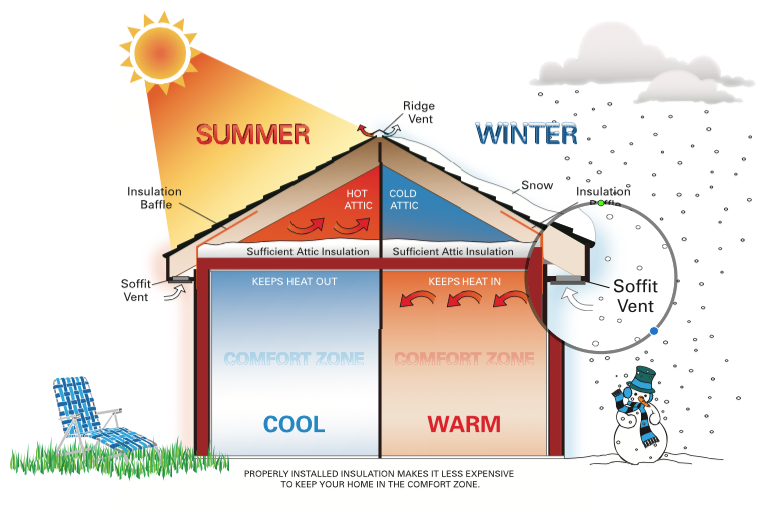Deep energy retrofits refer to a comprehensive approach to upgrading existing buildings to improve their energy efficiency and reduce their carbon footprint. This typically involves a combination of measures, such as improving insulation, air sealing, heating and cooling systems, lighting, and appliances. The goal is to achieve significant energy savings and reduce the environmental impact of buildings. A goal for energy retrofits is to expect a return on your investment usually within 5 years.
Below are the areas of approach by GreenLife Energy Solutions certified professionals upon the Home Energy Audit.
Building Envelope
Deep energy retrofits are a comprehensive approach to improving energy efficiency in existing buildings. Improving the building envelope, which includes the walls, roof, and foundation, through weatherization measures is a critical component of this process. Weatherization programs offer services such as air sealing, insulation installation, window and door upgrades, and duct sealing to improve the building envelope.
The retrofitting process involves an assessment of the building’s energy use and identifying opportunities for improvement. Once the assessment is complete, a weatherization plan is developed, outlining specific measures such as insulation installation and HVAC upgrades. The retrofit can help to reduce energy consumption, lower utility bills, and improve indoor comfort while also reducing greenhouse gas emissions.
In summary, deep energy retrofits to building envelopes through weatherization programs involve improving the energy efficiency of existing buildings by enhancing the building envelope through measures such as insulation, air sealing, and window upgrades. These retrofits can reduce energy consumption, lower utility bills, and improve indoor comfort while also having a positive impact on the environment.

HVAC/R
HVAC/R work through weatherization programs involves improving the energy efficiency and indoor air quality of residential buildings through the installation, maintenance, and repair of HVAC/R systems. Weatherization programs aim to reduce energy consumption and costs while also improving indoor air quality and comfort.
To achieve these goals, GreenLife Energy Solutions team members may perform a variety of tasks, such as:
- Installing and sealing ductwork to prevent leaks and improve efficiency.
- Installing insulation to reduce heat loss and gain, which can improve the efficiency of HVAC/R systems.
- Upgrading or replacing HVAC/R equipment with more efficient models.
- Installing or improving ventilation systems to ensure adequate airflow and indoor air quality.
- Testing and adjusting HVAC/R systems to ensure they are operating efficiently and effectively.
- Addressing specific indoor air quality issues, such as mold or moisture problems.
Through these tasks, HVAC/R technicians and contractors working in weatherization programs can help homeowners improve their homes’ energy efficiency, reduce their energy bills, and improve their indoor air quality and comfort. This can have a significant impact on the health and well-being of occupants while also helping to reduce greenhouse gas emissions and combat climate change.
Old
New
INDOOR AIR QUALITY (IAQ)
Indoor air quality (IAQ) refers to the quality of the air inside buildings and structures, such as homes, offices, schools, and other indoor environments. It is important to maintain good indoor air quality because people spend a significant amount of time indoors, and poor IAQ can have negative effects on health and well-being. Indoor air pollutants can come from a variety of sources, including building materials, household products, and outdoor air pollution that infiltrates buildings.
Weatherization programs can also address specific IAQ issues, such as mold and moisture problems. Moisture can enter a building through leaks or condensation, leading to the growth of mold and mildew, which can have negative health effects. Weatherization programs can help address these issues by identifying and fixing leaks, improving ventilation, and adding moisture barriers.
Overall, weatherization programs can help improve indoor air quality by reducing the infiltration of outdoor air pollutants, preventing the generation of indoor air pollutants, and addressing specific IAQ issues such as mold and moisture problems.

GreenLife Energy Solutions
Master HVACR License
19HC00687000
